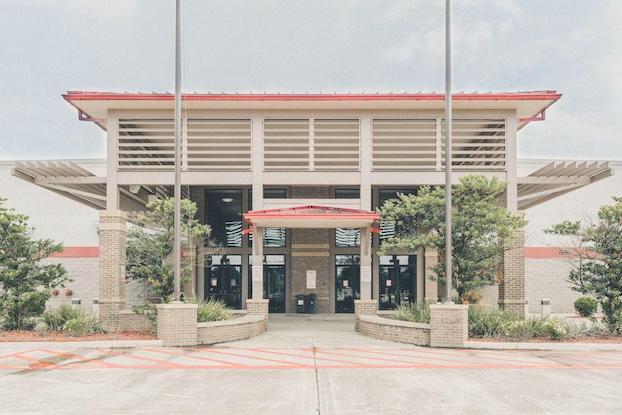Virtual Learning Summit showcases Calcasieu School Board’s forward-thinking programs
Published 11:59 am Friday, February 2, 2024

- (Emily Burleigh / American Press)
The Calcasieu Parish school district is a state leader in forward-thinking virtual education programs. For this reason, the Virtual Learning Summit was hosted at the Region 5 STEM Center on Friday.
Teachers, administrators and education leaders from 15 parishes, the Louisiana Department of Education and the Louisiana Board of Elementary and Secondary Education gathered at the STEM Center for a day of training. The Virtual Learning Summit is part of the LDOE’s new Virtual Programming Cohort that was developed alongside the Calcasieu Parish School Board.
The cohort aims to increase student access to high-quality teachers and diversified, hard-to-staff courses throughout the state through the development of district-level virtual programming during the spring. These programs would be implemented in August 2024.
CPSB’s Virtual Instruction Program (VIP) — which was recognized as an LDOE Model of Excellence early last year — was on display at the summit as an example for future localized virtual learning programs.
The VIP program provides high-quality courses — STEM, Dual Enrollment, Advanced Placement — to 700 students across all 11 high schools in the Calcasieu school district. The VIP teachers are housed at the STEM Center and stream synchronous specialized classes to students at each high school.
State Superintendent Cade Brumley said programming like VIP will help mitigate the teacher shortage. A few years ago, teacher vacancy numbers were as high as 2,520. Through policy and practice shifts and strong leadership, they were able to reduce those vacancies by 52 percent.
Currently, that number sits at about 1,000 vacancies. While more students have greater access to high-quality teachers than before, there is still room for improvement, he said.
“We need to be looking at all available avenues to ensure that students have access to a teacher.”
CPSB Superintendent Shannon LaFargue said the technology overhaul in the Calcasieu Parish school district began as a “spark” when he was chief academic officer in 2018. While meeting with educators in Katy, Texas, he realized the “digital transition was coming.”
“Katy, Texas said ‘We started in 2007 with BYOD and felt like we were 10 years behind.’ I said well that puts us about 20 years behind.”
Prior to the events of 2020, CPSB began to accelerate the use of tech on campuses and in curriculum through a BYOD (Bring Your Own Device) program and a virtual instruction trial run. He recalled the first teacher willing to try virtual instruction — Leslie Moore Gurley, a hybrid-teacher who taught solely at Sam Houston High School at the time.
She taught AP human geography virtually to students at Starks High School. LaFargue said Starks was a small school that was unable to offer its students diversified courses, but the virtual methodology opened up new doors for five students that year. They were the first high schoolers from Starks to receive AP credit.
Following the success of this program, CPSB began to brainstorm ways to expand the streaming model to more schools; nowever, the COVID-19 pandemic and 2020 hurricanes put a wrench in their plans, LaFargue said. With the quick institution of district-wide virtual classes, a general perspective that virtual education is not effective was developed.
While there were growing pains during the 2020-21 school year, some teachers slowly became comfortable with the virtual format and many students, especially those that were “digital natives,” eased into it.
“In the meantime, what happened under the surface was that skill sets were slowly being developed and evolved,” he said.
Brumley said the LDOE learned from the pandemic that students generally learn more effectively with face-to-face instruction and is aware of the skepticism that surrounds virtual learning; however, there is a major aspect of VIP that elevates it, he said. Since students never leave their campus to attend classes and follow a regular eight-period bell schedule, VIP offers them an average high-school experience that keeps them tethered to their school.
“They remain connected to their teachers. They remain connected to their friends. Those students aren’t isolated. They’re still very much part of their individual school community.”
VIP is an innovative piece of a larger puzzle that will take time, effort and out-of-the-box thinking to solve, he said.
“Is this going to ensure that every single student across the State of Louisiana has access to a high quality teacher? No. Is this going to reduce and eliminate every single vacancy in the State? No. But we have to be thinking creatively about solutions to make sure that we are doing everything within our power to ensure that every student has access to a teacher.”





